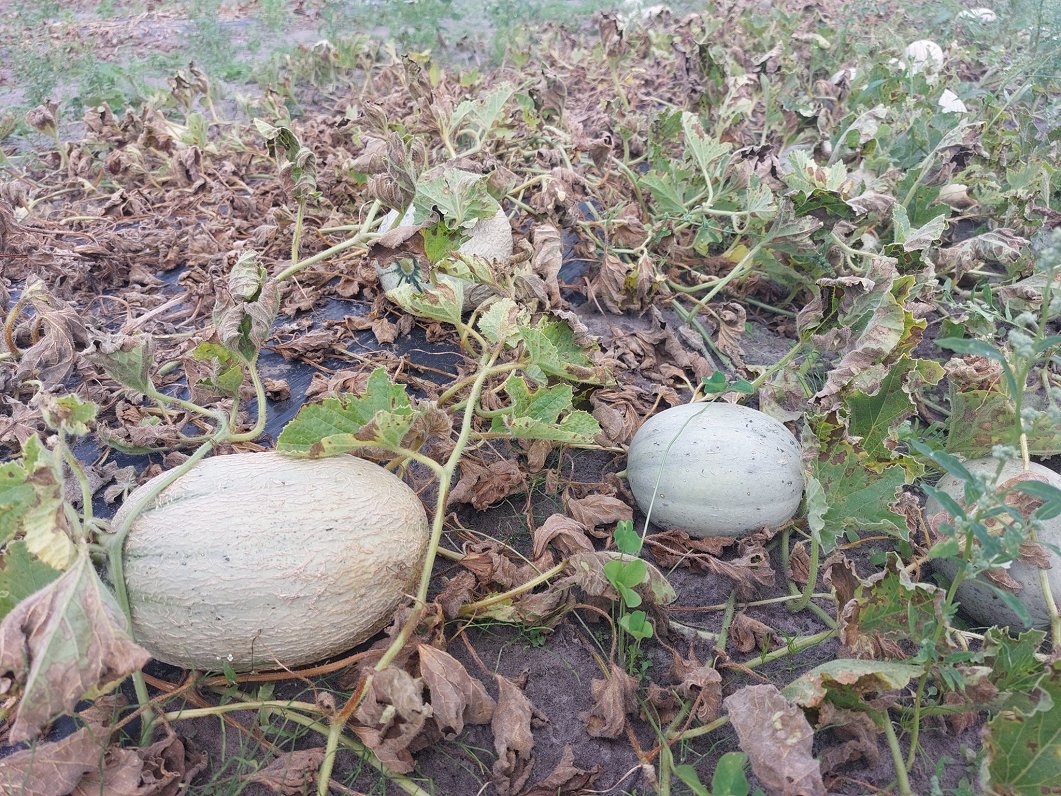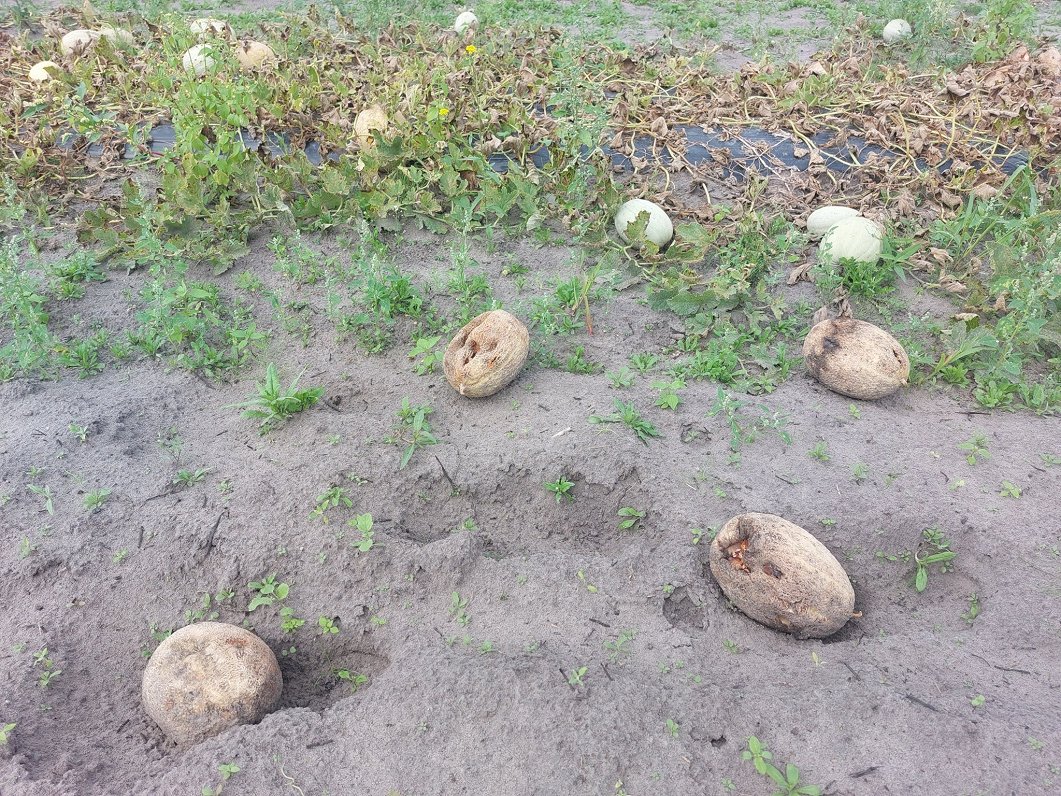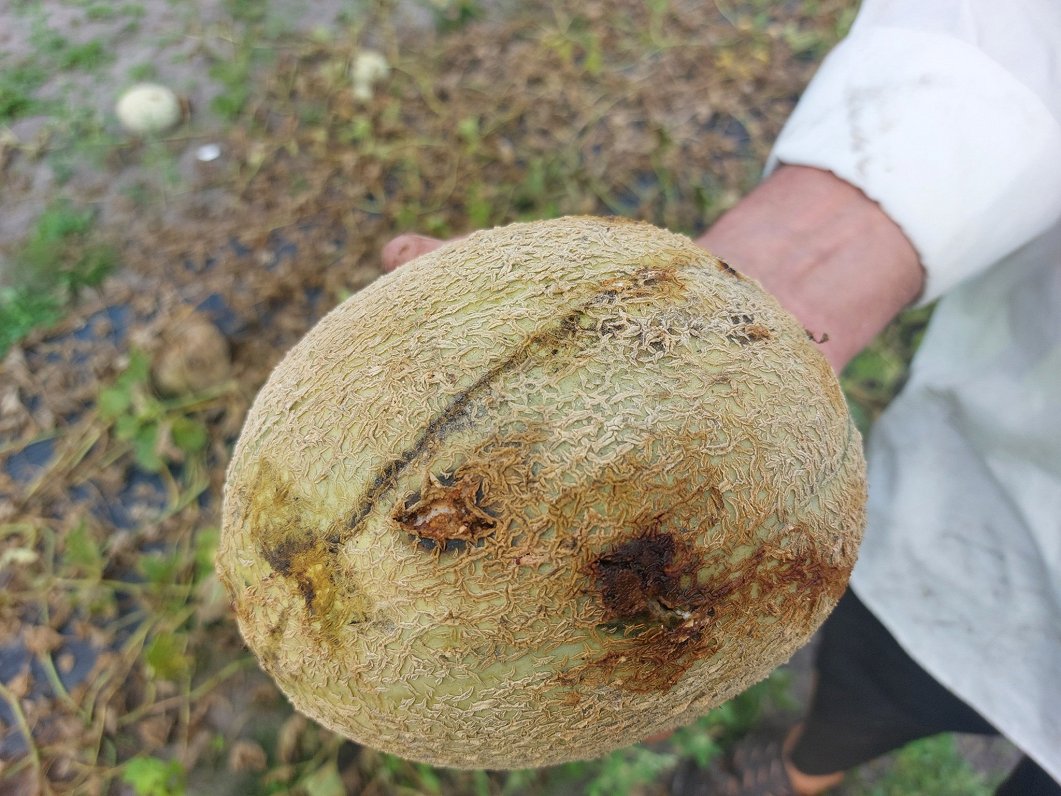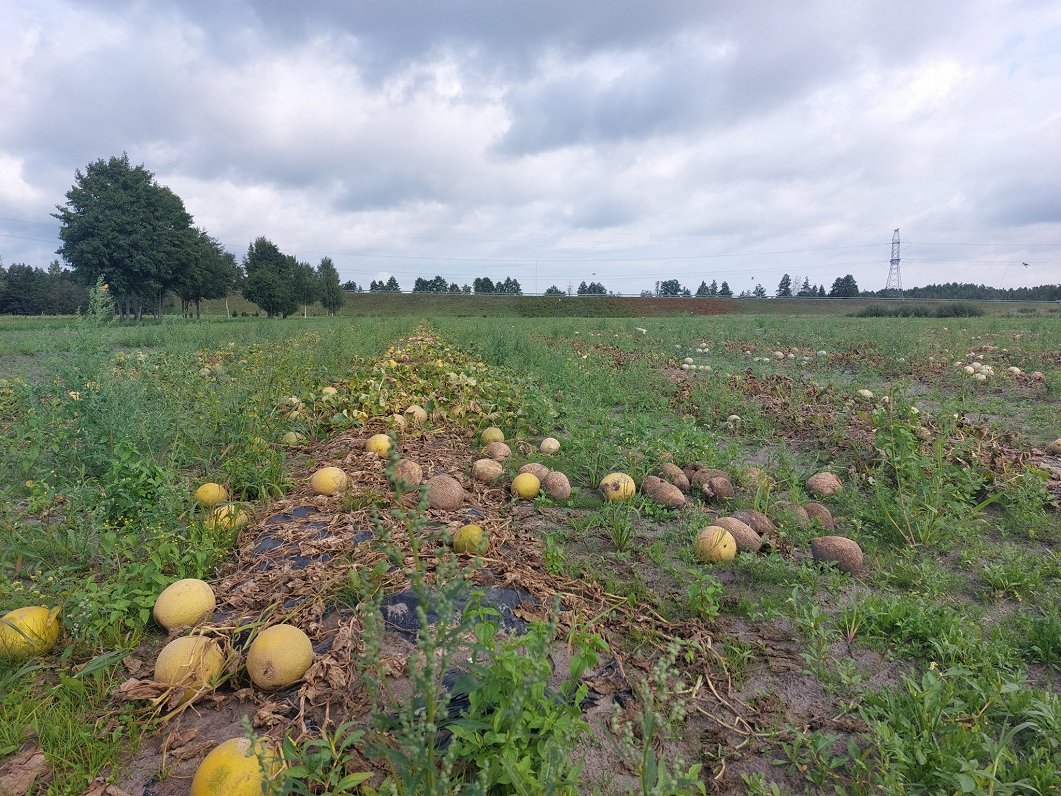The melon and watermelon grower Andrejs Kondratjuks found that neither the frost nor the hail affected the farm, but most of the melons on the field were rotten. The owner estimates that only around 20% of the planned harvesting this summer will be achieved.
When the melons were close to their level of readiness, the rain had begun and the growth had stopped, the melons were not finished, the grower said.
In eight years, this could be the second year the holding faced harvest losses. However, this should be taken into account. “This year I lost, yes, but good that I have a pension to put toward it so I can continue,” the grower said.
Also in watermelon furrows, yields are lower than expected — around 50%. Unlike melons, though, watermelons haven't sustained that much damage.
The concierge couldn't explain this: “I can't tell why, but it's for all watermelon growers, that the harvest didn't really pollinate. Yes, it's also a loss, but from those that have grown, none are of poor quality. Early varieties rotted on the field because they have very thin skin while the others grow very well.”
Latvian melons and watermelons are mostly bought on the spot at farms, but also on the market, demand for local fruit is currently high.
Growing melons and watermelons is still a niche activity in Latvia, but it can no longer be called exotic because there are more and more growers, concludes Kondratjuks:
“There are many in Latvia now, and not only small growers but also those who grow for sale. They need to develop even more, and the Latvian market needs to be filled with products grown in Latvia. Must be just like local cucumbers and tomatoes - market full and you can choose. But we have to deal with our weather, and if you follow it regularly and place tunnels and coverings, then the result can be achieved."


































